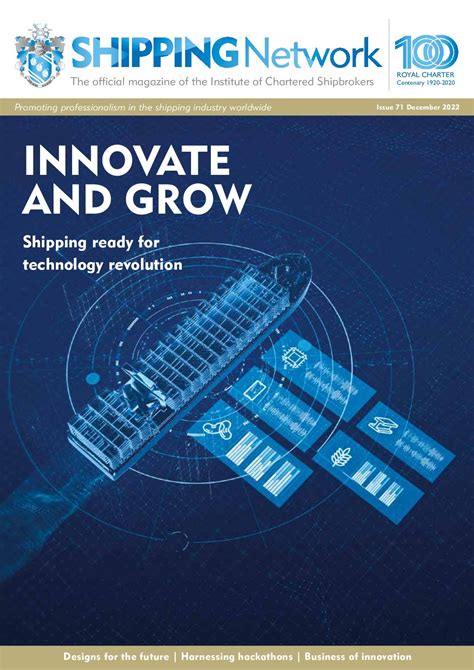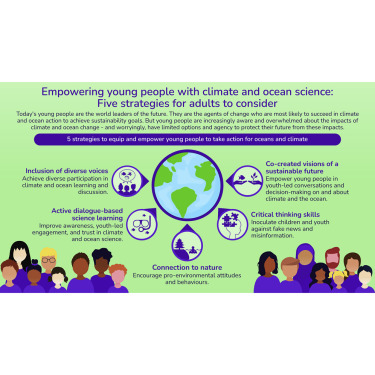Tourism Satellite Accounts (TSAs) are a vital tool in understanding the economic impact of tourism on both domestic and global scales. They provide a comprehensive framework for measuring the direct contribution of tourism to an economy, offering insights into employment, spending, and production related to the tourism sector. By integrating tourism data with national accounts, TSAs enable policymakers and businesses to make informed decisions and strategies for growth. This article delves into the importance of TSAs in economic analysis, exploring their structure, methodology, and practical applications, while also addressing challenges, limitations, and emerging trends shaping the future of tourism economics.
Delve into this topic with xotools.xyz for a comprehensive understanding.
1. Introduction to Tourism Satellite Accounts (TSAs)
Tourism Satellite Accounts (TSAs) are a statistical framework designed to measure the economic contributions of tourism in a structured and comparable way. They align tourism data with the System of National Accounts (SNA), offering a standardized method to quantify the sector’s impact on an economy. Traditionally, tourism’s multifaceted nature made it difficult to gauge its precise contribution to GDP, employment, and other economic indicators. TSAs address this gap by providing detailed insights into tourism-related production, consumption, and investment. Developed by international organizations such as the United Nations and World Tourism Organization, TSAs are now widely adopted by countries to better understand the direct and indirect effects of tourism. This system not only tracks the financial performance of the tourism industry but also provides critical data to guide policy decisions, assess sectoral performance, and drive sustainable tourism development strategies at both national and international levels.

2. Importance of TSAs in Economic Analysis
Tourism Satellite Accounts (TSAs) are crucial in economic analysis because they provide a clear, standardized measurement of tourism’s direct contribution to a nation’s economy. By integrating tourism data with national accounts, TSAs allow for more accurate comparisons between tourism and other sectors, such as manufacturing or agriculture. This enables policymakers to recognize the value of tourism, guiding decisions on investments, infrastructure, and resource allocation. TSAs also highlight the sector’s role in job creation, foreign exchange earnings, and GDP contribution, offering a deeper understanding of tourism’s overall economic footprint.
Moreover, TSAs are invaluable for businesses, helping them assess market trends, forecast demand, and align their strategies with economic realities. The comprehensive data collected through TSAs supports sustainable tourism development by identifying areas for growth, efficiency improvements, and potential environmental or social impacts. Overall, TSAs contribute to informed decision-making and strategic planning, allowing governments and businesses alike to optimize the benefits of tourism while addressing potential challenges.

3. Components and Structure of TSAs
Tourism Satellite Accounts (TSAs) consist of several key components that work together to measure the economic impact of tourism. At the core, TSAs provide data on tourism-related consumption, including spending by visitors on goods and services such as accommodation, food, transportation, and entertainment. These consumption figures are linked to the production side, identifying which industries provide goods and services consumed by tourists.
The structure of TSAs is built around 10 core tables that cover various aspects of tourism’s economic role. These tables include data on tourism expenditure by both domestic and international visitors, tourism’s contribution to GDP, employment generated by tourism, and the supply of goods and services to meet tourism demand. The accounts also track gross fixed capital formation related to tourism and the tax revenue generated from tourism activities.
Together, these components create a detailed picture of tourism’s economic significance, offering insights that help governments and businesses plan for sustainable development and enhance the benefits of tourism in their economies.

4. Methodology and Data Collection
The methodology behind Tourism Satellite Accounts (TSAs) involves a detailed process of data collection, organization, and analysis. The key to TSA construction is aligning tourism-specific data with the broader System of National Accounts (SNA). This ensures consistency and comparability with other sectors of the economy. Data is gathered from a variety of sources, including tourism expenditure surveys, business surveys, and administrative data, which capture information on the goods and services consumed by tourists.
Surveys often target both domestic and international visitors to capture comprehensive spending patterns, while data from businesses, such as hotels, airlines, and restaurants, provide insights into the supply side of tourism. Administrative data, including border control information, helps track visitor flows and characteristics. These multiple data streams are synthesized to create a cohesive understanding of tourism’s impact on economic indicators like GDP, employment, and production.
The methodology used in TSAs also emphasizes accuracy and reliability. International guidelines provided by organizations like the UN and World Tourism Organization ensure consistency in data collection and analysis, making TSAs an essential tool for accurate, informed economic analysis of the tourism sector across different countries and regions.
5. Applications and Uses of TSAs
Tourism Satellite Accounts (TSAs) have a wide range of applications and uses, making them invaluable for policymakers, economists, and businesses. One of the primary uses of TSAs is to provide a clear understanding of tourism’s direct contribution to a country’s economy, including its impact on GDP, employment, and the supply chain. This data is crucial for governments when developing policies, as it highlights the importance of tourism in national economic strategies and helps allocate resources more effectively.
TSAs also aid in the formulation of targeted tourism development plans. By understanding which tourism sectors are most profitable or which geographical areas have untapped potential, governments can focus on promoting sustainable tourism practices that optimize economic benefits while minimizing negative impacts. Additionally, TSAs provide critical information to the private sector, helping businesses analyze market trends, forecast future demand, and adjust their strategies to align with economic realities.
On a global scale, TSAs allow for international comparisons of tourism’s economic contributions, offering insights into how different countries are leveraging their tourism sectors. Furthermore, TSAs are vital for monitoring the effects of external factors, such as economic crises, pandemics, or environmental changes, on tourism. This information supports efforts to build resilience in the tourism industry and adapt to changing economic conditions, ensuring long-term growth and stability.
6. Case Studies and Examples
Tourism Satellite Accounts (TSAs) have been implemented by numerous countries, providing insightful case studies that showcase the practical value of this economic tool. For instance, Spain has long been a leader in utilizing TSAs to measure tourism’s significant role in its economy. By integrating TSA data, Spain has been able to quantify tourism’s contribution to its GDP and employment more accurately, which in turn informs national tourism policy and development. The Spanish TSA has also helped to pinpoint which regions and types of tourism (such as coastal or cultural tourism) drive the most economic value, guiding targeted investment strategies.
Similarly, New Zealand has used TSAs to assess tourism’s impact on its economy, particularly the role of nature-based tourism. New Zealand’s government has leveraged TSA data to make informed decisions on sustainability initiatives, ensuring that economic growth from tourism is balanced with environmental preservation. TSAs have also enabled New Zealand to track shifts in visitor spending patterns, allowing them to adapt marketing and development efforts to changing trends.
Another compelling example comes from Canada, where TSAs have been instrumental in evaluating the economic impacts of both domestic and international tourism. By understanding the financial flows within the tourism sector, Canada has crafted more effective tourism policies that support regional development, improve tourism infrastructure, and drive long-term sectoral growth.
7. Challenges and Limitations
Despite their usefulness, Tourism Satellite Accounts (TSAs) face several challenges and limitations. One significant challenge is the complexity of data collection. Gathering accurate and comprehensive data on tourism expenditure and its impact requires extensive surveys and coordination across various sectors, which can be resource-intensive and time-consuming. Additionally, discrepancies in data quality and coverage between countries can hinder the comparability of TSAs on a global scale.
Another limitation is the potential for outdated or incomplete data. Tourism trends and economic conditions can change rapidly, and if TSAs are not updated frequently, they may not accurately reflect current conditions. This can lead to misinformed policy decisions or business strategies based on stale information.
Furthermore, TSAs often rely on assumptions and estimates, particularly when dealing with indirect tourism effects or less well-documented tourism activities. These assumptions can introduce uncertainties into the data.
Lastly, integrating TSA data with national accounts systems requires careful alignment and harmonization. Differences in accounting practices and definitions can affect the consistency and reliability of the information. Addressing these challenges is essential for improving the accuracy and utility of TSAs in economic analysis.
8. Future Trends and Innovations
The future of Tourism Satellite Accounts (TSAs) is poised for significant advancements driven by technological innovations and evolving industry needs. One notable trend is the increasing integration of big data and real-time analytics. By utilizing data from mobile apps, social media, and other digital platforms, TSAs can provide more dynamic and timely insights into tourism patterns, spending behaviors, and economic impacts. This will enable more responsive and accurate economic analysis and policy-making.
Another promising development is the application of artificial intelligence (AI) and machine learning to TSA data. These technologies can enhance predictive analytics, identify emerging trends, and improve the accuracy of tourism forecasts. AI-driven tools can also automate data collection and processing, reducing the time and resources required for TSA maintenance.
Additionally, there is a growing emphasis on incorporating sustainability metrics into TSAs. As tourism increasingly focuses on environmental and social sustainability, future TSAs may include data on the ecological footprint of tourism activities, community impacts, and sustainable practices. This will help align tourism growth with sustainability goals and support responsible tourism development.
Overall, these innovations will make TSAs more comprehensive, accurate, and useful, providing valuable insights for stakeholders across the tourism sector and enhancing strategic planning for future growth.
9. Conclusion
Tourism Satellite Accounts (TSAs) play a pivotal role in understanding the economic impact of tourism by providing a detailed and standardized measurement of the sector’s contributions. Through their comprehensive framework, TSAs enable policymakers, businesses, and researchers to gain valuable insights into how tourism affects national economies, including its influence on GDP, employment, and investment.
The structured approach of TSAs, incorporating detailed data on tourism expenditure, production, and employment, supports informed decision-making and strategic planning. Despite challenges such as data collection complexities and the need for frequent updates, TSAs offer essential benefits, including improved accuracy and comparability of tourism statistics.
Looking ahead, advancements in technology, such as big data analytics and artificial intelligence, are set to enhance the capabilities of TSAs, providing more dynamic and real-time insights. Additionally, the integration of sustainability metrics will align TSAs with global efforts towards responsible tourism development.
In conclusion, TSAs are invaluable for capturing the full economic impact of tourism and guiding future policies and strategies. Their continued evolution will ensure that they remain relevant and effective tools in maximizing the benefits of tourism while addressing its challenges and opportunities in a rapidly changing global landscape.
xotools.xyz









